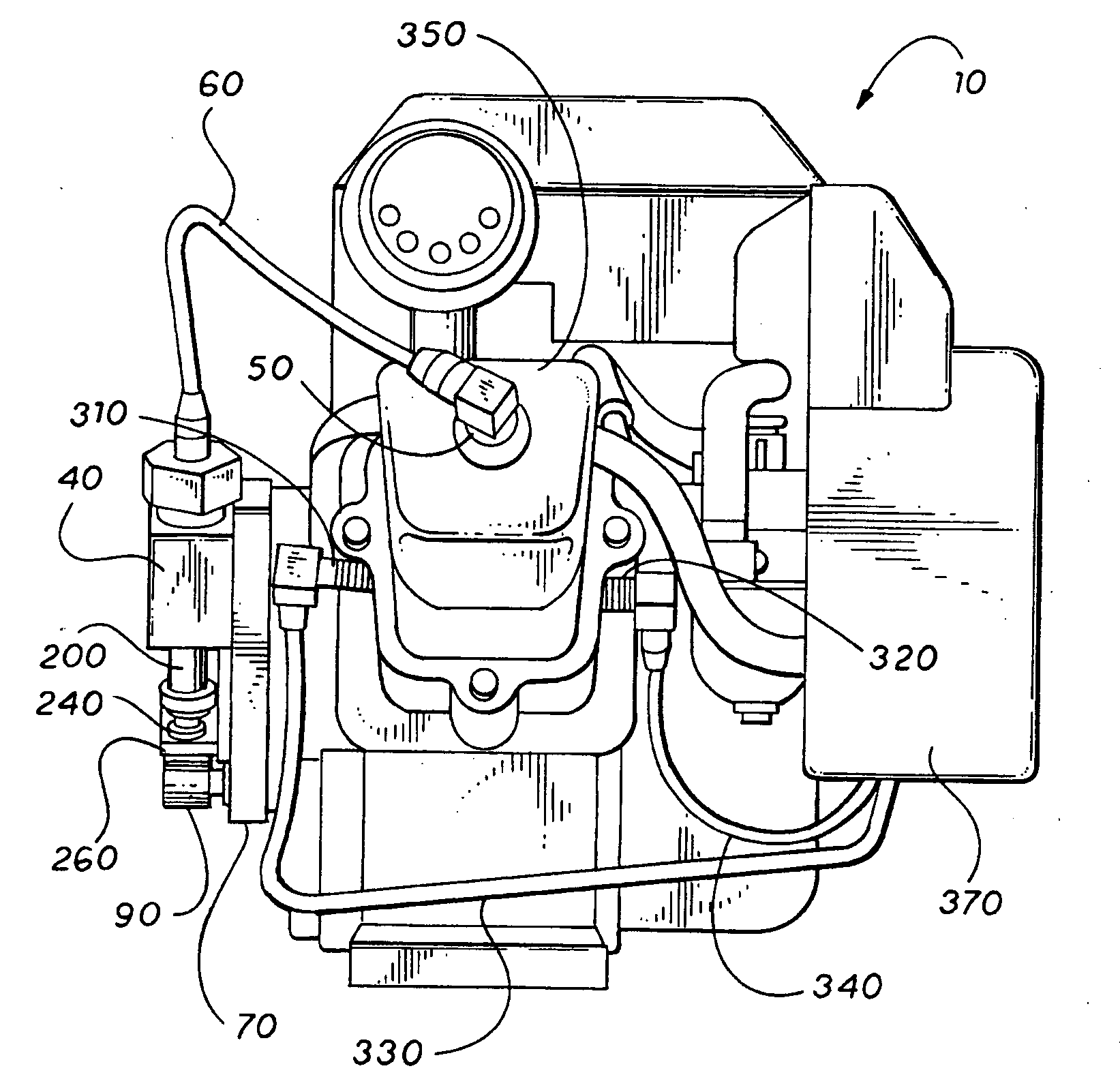The cost of
petroleum fuels, environmental concerns, and
fuel supply consistency from politically unstable regions of the world, all cause concern for the viability of
gasoline-based fuels.
However, in
spite of the benefits, such
alternative fuels are not readily introduced into the market due to a lack of equipment that can utilize them efficiently and / or a lack of infrastructure to provide them.
Further compounding the problem is that an engine designed for one type of fuel is not adaptable to utilize a different fuel without great difficulty.
While there are “selective fuel vehicles” available today, and they offer limited ability to utilize alcohols as fuel, they do not improve the
combustion process for
alcohol, they merely add more fuel (typically by altering the fuel
injector timing) to compensate for the lower
energy level of alcohols, and, thus, the
alcohol fuels are utilized very inefficiently.
Moreover, this reduced efficiency offsets the cost reductions that would otherwise be achieved, and aggravates air, water and soil
pollution.
Unfortunately, existing vehicles are limited to use of individual fuels, or use of fuels that are only slight variations of each another, or alternately are inefficient and / or require modifications to run on
alternative fuels.
Thus, a driver will not purchase a vehicle to run on
ethanol if he / she does not know for certain that he / she will be able to obtain
ethanol while out and about.
However, this has not heretofore been the norm.
Unfortunately, while engines may be designed to run on ethanol, or mixtures of gasoline and ethanol, current efforts merely design to a new fixed compression and are not directed to attaining an increased efficiency through variability of compression.
If the fuel / air mixture is too hot (from too much compression), an auto-ignition or pre-
detonation (knock) may occur that is both detrimental physically to the structure of the engine, and further results in a loss of efficiency.
Unfortunately, the
Miller cycle typically disadvantageously requires a
supercharger to facilitate the introduction of air into the cylinder through the intake valve.
Unfortunately, Diesel fuels are also typically derived from oil resources, and, thus, do not alleviate the problem of short supplies of oil.
While a modicum of variability of compression can be obtained by selection of the timing of firing of the igniter device, such timing can only offer a limited selectivity of the compression.
Such limitation typically prevents the use of
alternative fuels within an engine unless mechanical modifications are made thereto to provide different compression ratios.
Such mechanical modifications are generally extensive and costly.
However, such an approach utilizes discrete levels of compression and precludes continuous variation.
Varying the valve overlap period to change the fuel / air mix will increase or decrease the density of the fuel / air mix, will also result in increased or decreased compression.
However, such overlap (both valves open at the same time) will cause newly introduced fuel to pass out through the exhaust and consequently be wasted.
Again, such an approach can only select between discrete intervals of compression and cannot be externally varied.
As a result of design constraints, such previous devices are limited to selection among fixed ratios of compression and / or rely upon the entry and variation of fuel and / or air admitted to the
combustion chamber before the compression portion of the cycle begins.
Thus, previous devices have lacked variation of compression during the compression
stroke itself, and further lack the ability to vary the
compression ratio by external means.
Due to their lack of variability, such engines are not readily adaptable to changes in fuels or
fuel quality.
The swept volume is generally not variable, though some engines now have very complex mechanisms capable of altering the distance between the
crankshaft and the
combustion chamber.
Using different fuels in the same engine therefore presents a significant
engineering challenge.
 Login to View More
Login to View More  Login to View More
Login to View More 


